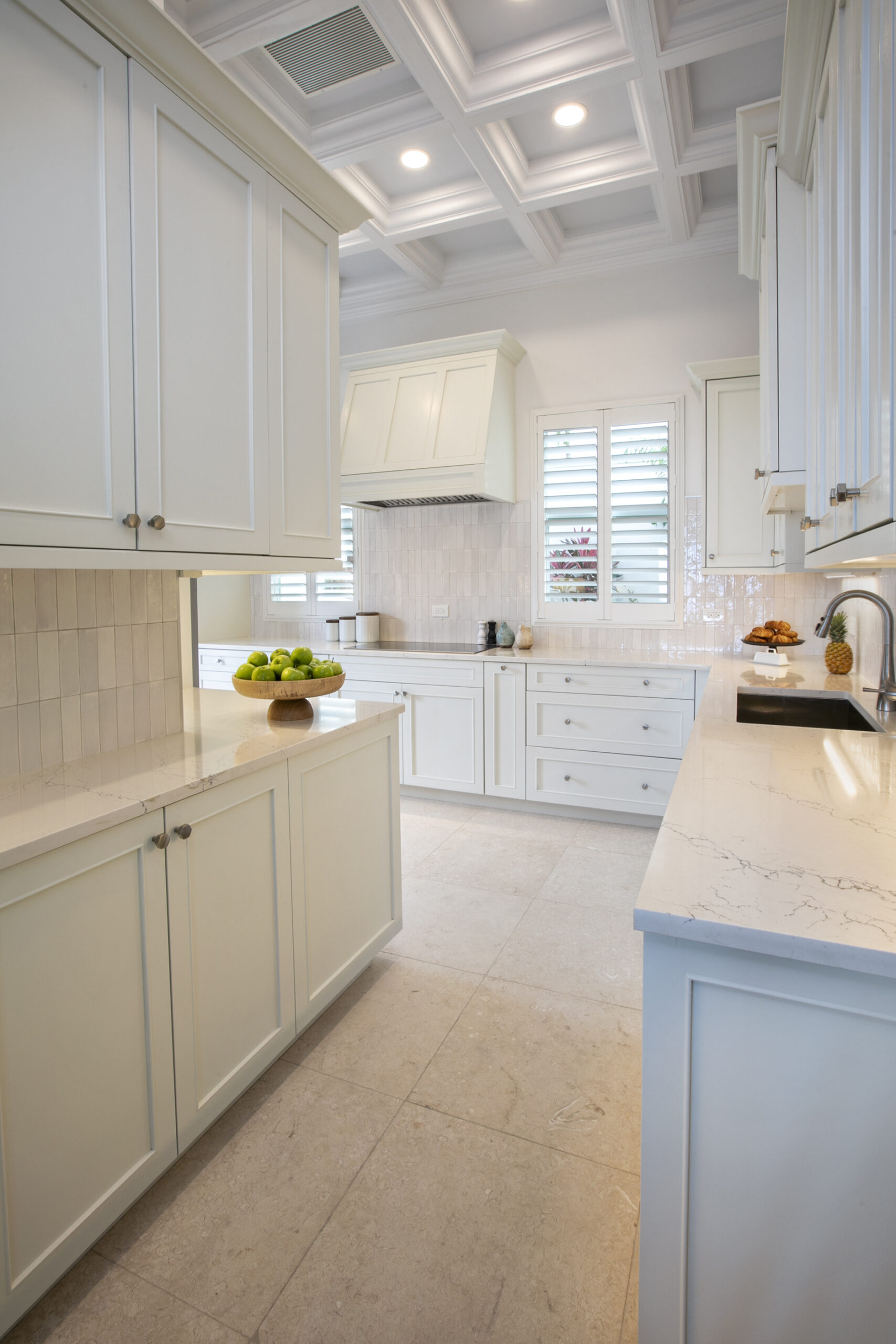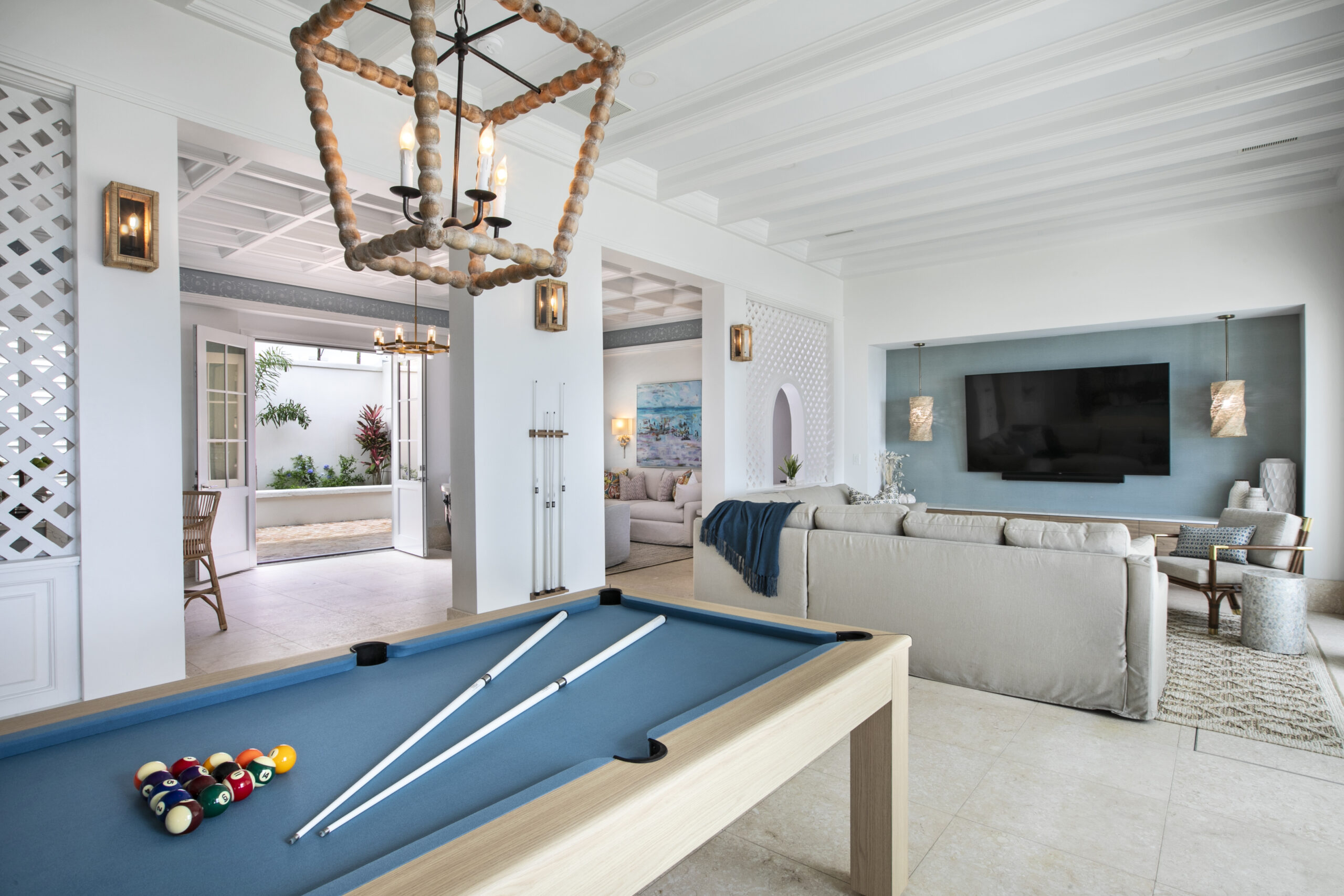Creating a tranquil island getaway at home goes beyond just aesthetic choices—it’s about crafting spaces that invite calmness and offer a respite from the daily grind. In this post, we’ll dive into the elements that make a home beautiful and serenely inviting.
Tranquility in interior design reflects more than just a look; it’s a feeling that permeates through the serene backdrops and peaceful color palettes. It’s about designing spaces that not only soothe the eyes but also calm the mind and spirit. As designers, we use all our resources to bring a sense of ease to your space through color, textures, furniture selections, and even the process by which we lead you through the selections should feel effortless.
-
Selecting the Right Color Palette
Colors profoundly impact the ambiance of a room. For a tranquil island vibe, think of the hues you’d find at the beach at dawn—soft sand tones, pale sky blues, and gentle greens. In bedrooms, opt for cool blues and greens to promote restful sleep, while living areas can benefit from warmer sands and whites, creating a welcoming environment.
-
Incorporating Natural Elements
Natural materials are the cornerstone of island tranquility. We all respond to nature and natural elements; the sounds of leaves blowing and waves crashing help us all unwind, so bringing that influence into the home will help you connect to nature even further. Woods like teak and bamboo, stones, and woven materials not only bring the outdoors inside but also create a tactile connection to nature. Choose furnishings that reflect these elements, like a bamboo frame chair or a stone coffee table, to ground your space in nature’s calm.

-
Maximizing Natural Light
Light is a crucial element in creating a feeling of openness and peace. Maximize natural light by keeping windows unobstructed and using light, airy curtains that allow sunlight to filter through. Mirrors strategically placed across from light sources can also enhance the light in a room, making the space feel larger and more open.
-
Creating Flow with Open Spaces
The layout of your home can influence how peaceful it feels. Open floor plans remove barriers to light and air, facilitating a smooth flow throughout the home. Consider open shelves and low-backed furniture to maintain sight lines and enhance the sense of space. Look for ways to arrange furnishings in the room that do not have every piece pushed up against a wall. This allows more social circulation in the room. Carefully scale your pieces to maximize comfort, but be sure not to overfill a room. Remember, less really is more in some situations!
-
Integrating Water Features
Water features can be a focal point of tranquility in a home. The sound of flowing water is inherently soothing and can be incorporated through small indoor fountains or outdoor water bodies. These features not only add a visual element but also enhance the auditory experience of the space.

-
Incorporating Art and Decor from the Islands
Local art and decor items carry the spirit of their origin. Incorporate island-inspired artwork, like paintings of seascapes or sculptures made from driftwood, to bring a piece of island life into your home. These elements should harmonize with the color and material choices, enhancing the tranquil theme.
Designing for tranquility involves more than just decoration—it’s about creating an atmosphere that revitalizes and soothes, connecting to your surroundings, and telling your personal story. By incorporating these elements, you can transform your home into a serene island getaway that nurtures peace and relaxation.












